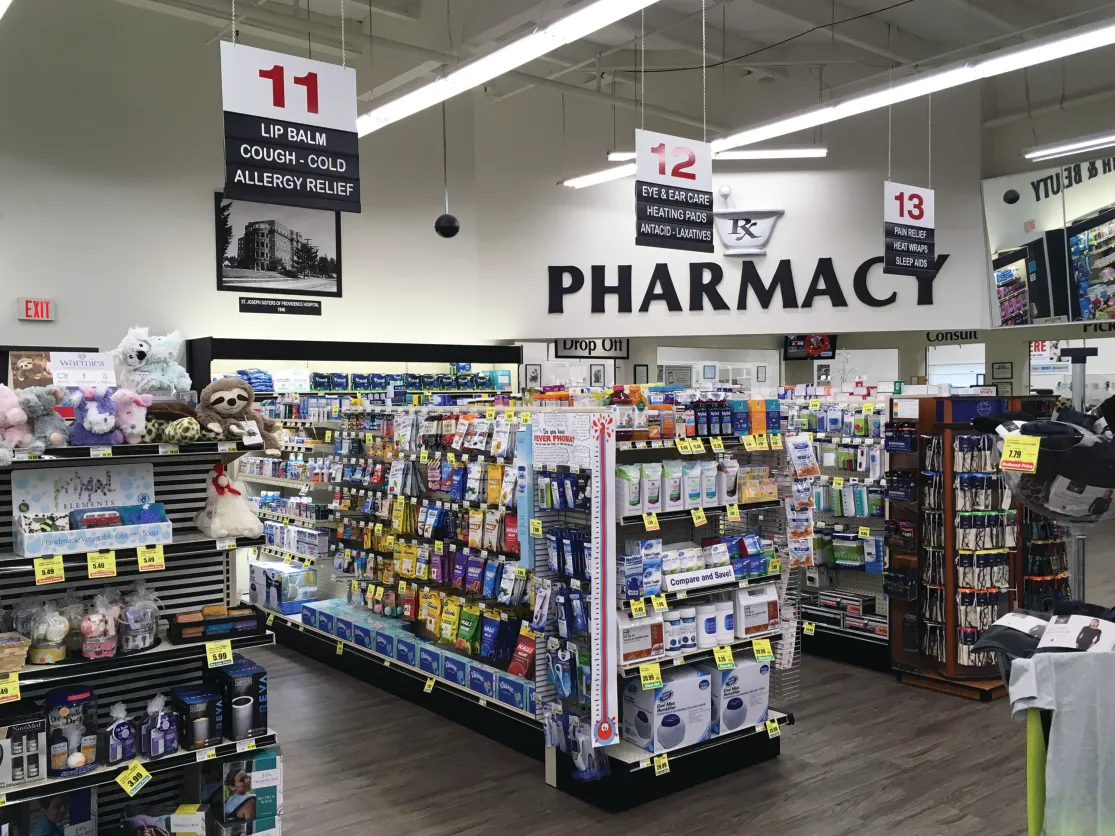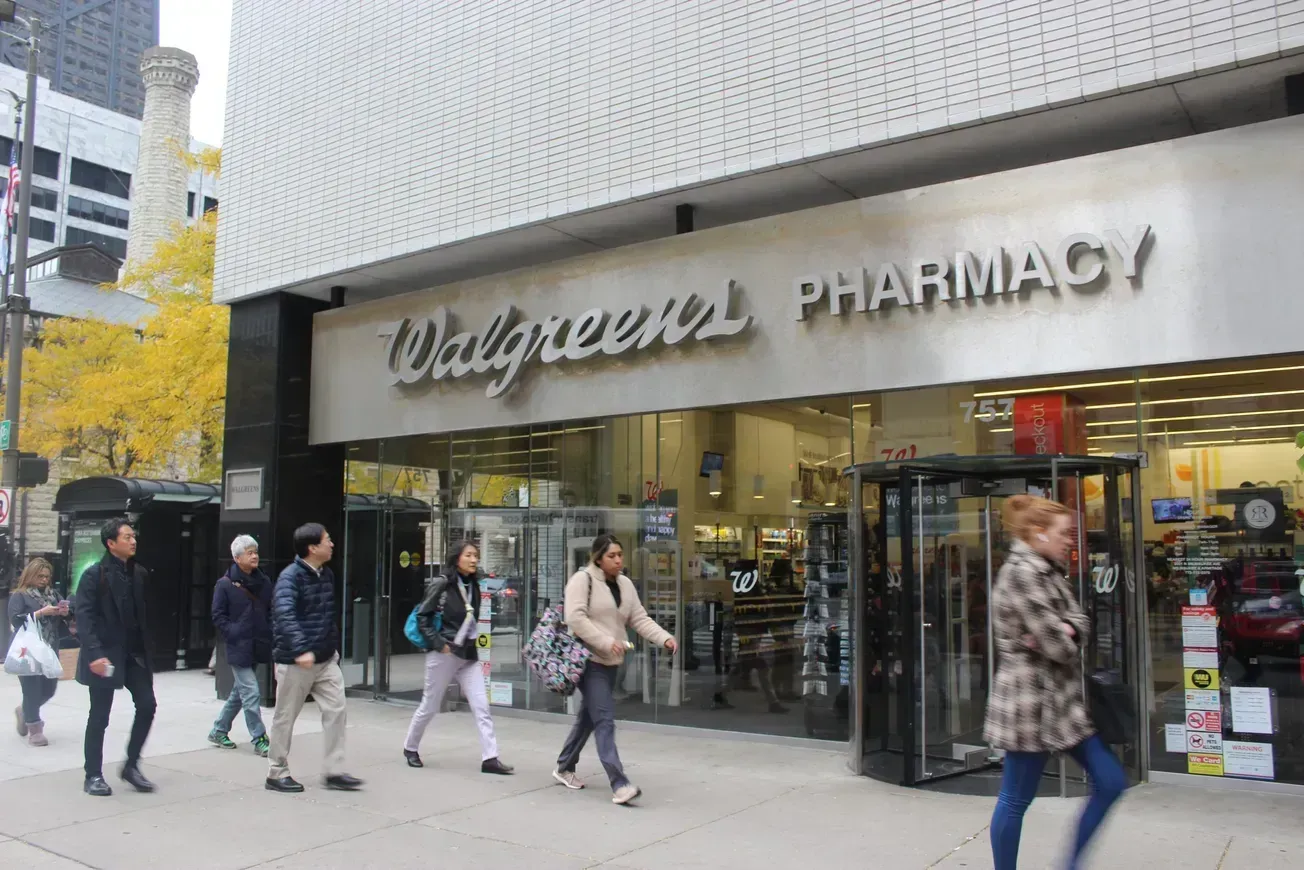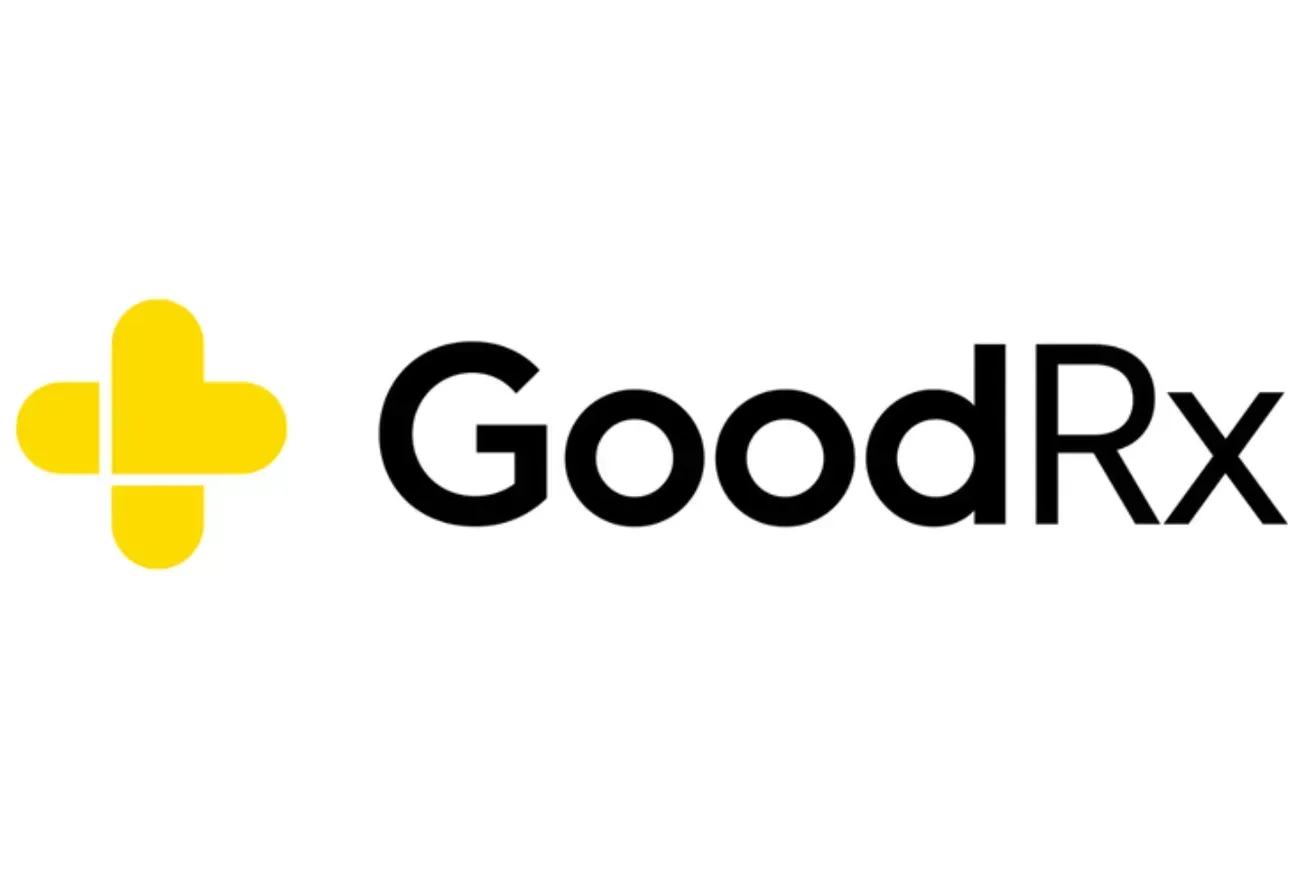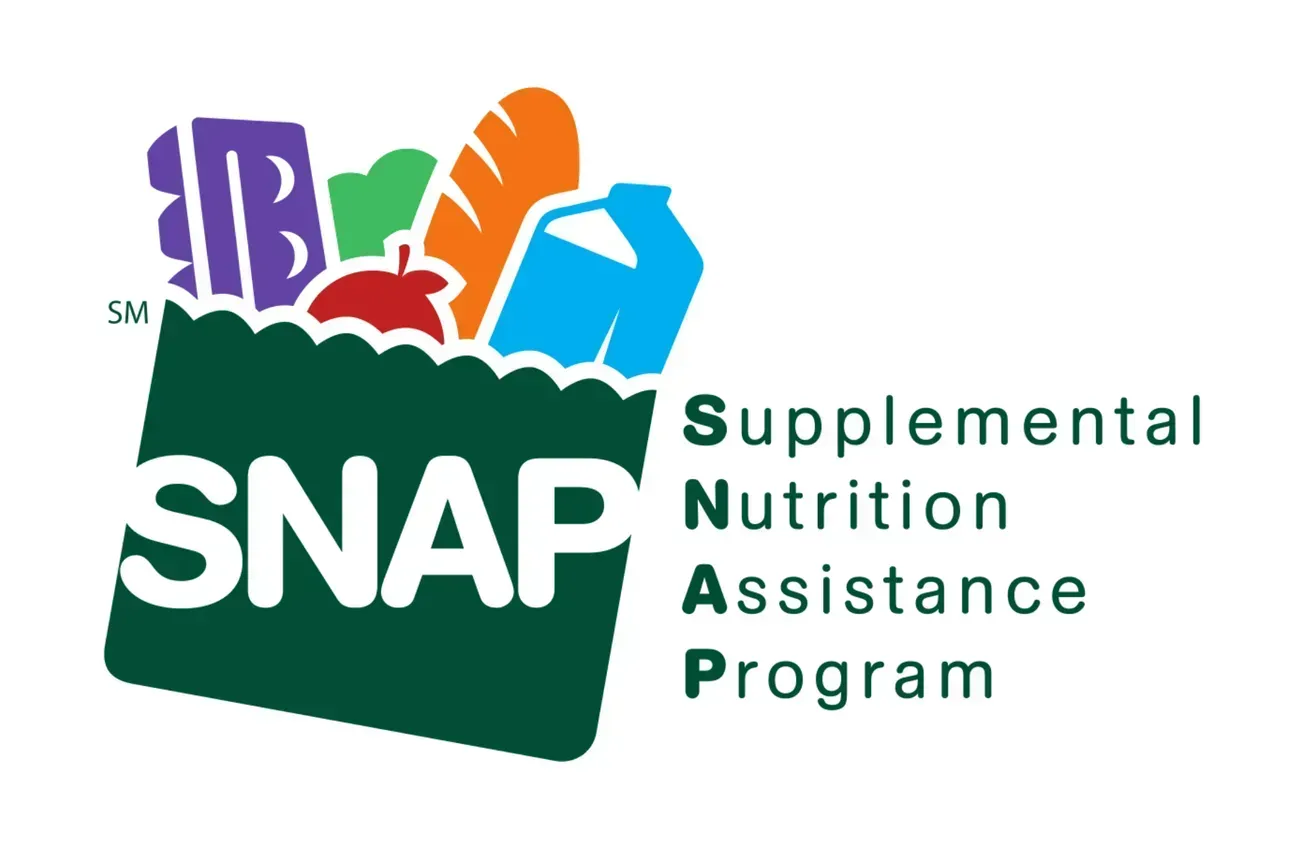
Ed Rowland
The phrase “same but different” has its origins in Thailand and is reflective of the ambiguity built into the Thai language. It enables uncertainty in everything. The 2023 North American Consumer Healthcare world was aguably the same but different. Retail health among various channels, e-commerce, a broader definition of consumer health care and how categories are defined, big pure-play over-the-counter giants, a recovering supply chain and post-COVID consumer optimism (or not) all provided significant change. Was that change simply part of an ongoing trend or something new? The same but different?
Disruption in the retail sphere
The 2023 consumer health care retail world continued in a state of disruption. Some channels continued on familiar paths forward while others rolled downhill in reverse. The two remaining large drug chains, CVS and Walgreens, are closing stores at a fast clip. In 2023, CVS already shut down about 630 of the announced 900 while also exiting its Target locations. What used to be the only not-large but not-small drug chain Rite Aid is coming out of Chapter 11. The bounce from COVID-related foot traffic is subsiding. As one insider noted, “I got vaccinated in my local Walgreens and it was a madhouse. Several customers walked out …” The madhouse is now empty. Additionally, another industry insider observed that “theft is a real problem, and they haven’t figured it out yet.” Everyone is struggling with a shortage of pharmacists. It’s a tough operating environment. The chain drug world navigated an ugly storm in 2023.
Drug chains have accelerated their migration away from consumer health care brands in favor of health care services. No longer do CVS or WBA buyers seek innovative O-T-Cs and, as one industry leader put it, “they aren’t interested in taking a risk, and the winners are the big players with large trade budgets. The innovative merchants have retired or moved on.” Number crunching, not innovation, controls shelf space decisions. To date, no large or small drug chains have built a competitive e-commerce platform. It is instructional to note that one of the premier loyalty programs at Boots in the U.K. has not been replicated at its sister Walgreens stores. CVS’ rebranding to Healthspire by cobbling Oak Street and Corvallis together has not resulted in increased value or revenues.
Local pharmacies will, PBM pressure notwithstanding, come out of COVID-19 in better shape due to genuine ties to their communities, but it’s virtually impossible to take risks when your O-T-C products are delivered by cash-strapped wholesalers, most notably Cardinal Health. Although there’s a different dynamic, number crunching is crushing consumer health care product growth and creativity in independent pharmacy as well.
Dollar stores, although momentum slowed in 2023, are still committed to store openings. Meanwhile, the grocery channel is branching into health care in two ways: services and a broader definition of health care that is Food Is Medicine. Unimaginable pre-COVID, Hy-Vee now offers infusion therapy. Grocery giant Kroger is pioneering Food as Medicine in an interactive approach. It is becoming more difficult to discern whether this is consumer health care or simply dietary discipline delivering healthy living. Ultimately, they are the same.
Innovation thrives in
e-commerce
Innovation and growth are, however, alive and thriving within e-commerce at Walmart.com and Amazon.
While Amazon’s consumer health care growth may have plateaued in 2023, it is a very high plateau. The Emerson Group 2023 State of the Industry notes that virtually all retail growth in Health & Beauty was driven by e-commerce, racking up almost 19% of units sold and 28% of revenues. The fourth quarter was an especially strong showing, with both measurements up over 30% versus the fourth quarter of 2022. This is a long-term tsunami; e-commerce participation and savvy are not optional.
Not surprisingly, Walmart and Amazon are expanding their overall health care footprint; the former provides 24/7 telehealth while Amazon offers $5 prescription pricing, is expanding its One Medical efforts, and leverages Prime membership for everything it does. Amazon’s next-level efforts of connecting voice activation Epic with hospital systems and providing drone delivery seem Star Trek-like when compared to all other health care companies.
PE comes out on top
The large O-T-C brand owners Haleon and Kenvue slogged through 2023 burdened by the debt they inherited when spun off. Meanwhile, Sanofi announced plans to spin off its Consumer Healthcare division in 2024. The 2023 Emerson State of the Industry report detailed the growth and growth trends for public, private and PE-owned brand owners. The differences were stark. At the end of 2023, the three-year CAGRs were 2.2% for public companies, 9.7% for PE-backed brand owners, and an eye-popping 11.3% for private companies. No wonder the PE world continues to stalk the large players in hopes of acquiring and reviving neglected brands.
Naloxone and norgestral switch
While there were no blockbuster 2023 switches, there were two worth noting: naloxone and norgestral. The ACNU (Additional Conditions of Safe Use) effort to provide further flexibility for existing O-T-Cs was delayed until 2024.
The opioid antagonist naloxone (RiVive and Narcan) was and is being deployed through governmental agencies to first responders through the nonprofit HRT (Harm Reduction Therapies). There are several for-profit companies in the space as well. Pricing conflicts that are being resolved by market forces.
In July, the FDA approved Opill (norgestrel), a daily oral contraceptive. There are still two key issues that have not yet been resolved: pricing and reimbursement. The process for gaining reimbursement approval will be a challenge. There was also FDA action for one particular molecule as an advisory committee determined that oral phenylephrine (approved O-T-C in 1976), a cold remedy mainstay, does not work.
The FDA did not finish the long-awaited ACNU intended to “establish requirements for a nonprescription drug product that has an additional condition for nonprescription use. The proposed rule is intended to increase options for the development and marketing of safe and effective nonprescription drug products.” This will most likely be a 2024 milestone.
New categories shape direction of growth
As the definition of consumer health care continued to broaden, 2023 featured new category descriptors and emerging categories. Mental health Food as Medicine and sleep are growth categories. Well-being, wellness (especially women), habit, reactive, condition specific, longevity and formerly taboo have replaced CCA, GIs, pain, bundling product and services, and preventative versus treatment as new descriptors for an industry that is sometimes challenged to understand what it is and, more importantly, how to shape strategic efforts.
More supply chain issues on the horizon?
The COVID-induced three-year-long supply chain challenges seem to have finally subsided, but there is another threat on the horizon: Red Sea shipping attacks by Iranian-backed, Yemen-based Houthi militants. While this seems distant and not relevant, the disruption increases shipping costs, causes not-insignificant delays and raises inflation fears. According to CNBC News, more than $200 billion in trade had already been diverted from the Red Sea by the end of 2023. This will not be felt immediately, but one forecaster believes the negative impact will be measurable by the fourth quarter. Anecdotally, the CHC industry has recovered from the rolling mess caused by COVID-19. One smaller O-T-C brand owner noted that by the second half of 2023 most inventory levels of raw and finished goods had returned to a “normal” three months. While the militants can’t inflict COVID-level economic and supply chain pain, it is an annoying issue that could have an impact toward the end of 2024. If this happens, it will most likely be a pricing issue and not a more disruptive inventory level challenge.
Economic prospects uncertain
The industry is also split on the economic prospects for 2024. “It’s the economy, stupid” will dictate consumer spending. Inflation has come down but, as one brand owner noted, prices peaked at historically high levels during COVID-19. The Emerson Group notes that, for the first time in two years, more than 50% of consumers expected to be financially better off as 2023 came to a close. Consumer behavior will struggle with the conflicting views of “it’s getting better” versus “we still have high prices.”
As we look back at 2023 perhaps “same but different” could be replaced by “the more things change, the more they stay the same.” That saying first appeared in the mid-19th century and reappeared more recently as lyrics in a Jon Bon Jovi song. Bon Jovi had another hit with lyrics, “Who says you can’t go home? Who says you can’t go back?” Perhaps you can go back to the pre-COVID consumer health care world. While that is doubtful, if it were possible, it will almost certainly be the same but different.
Ed Rowland is principal of the Rowland Group LLC. This article first appeared in the North American edition of “Nicholas Hall’s OTC Insight.”









